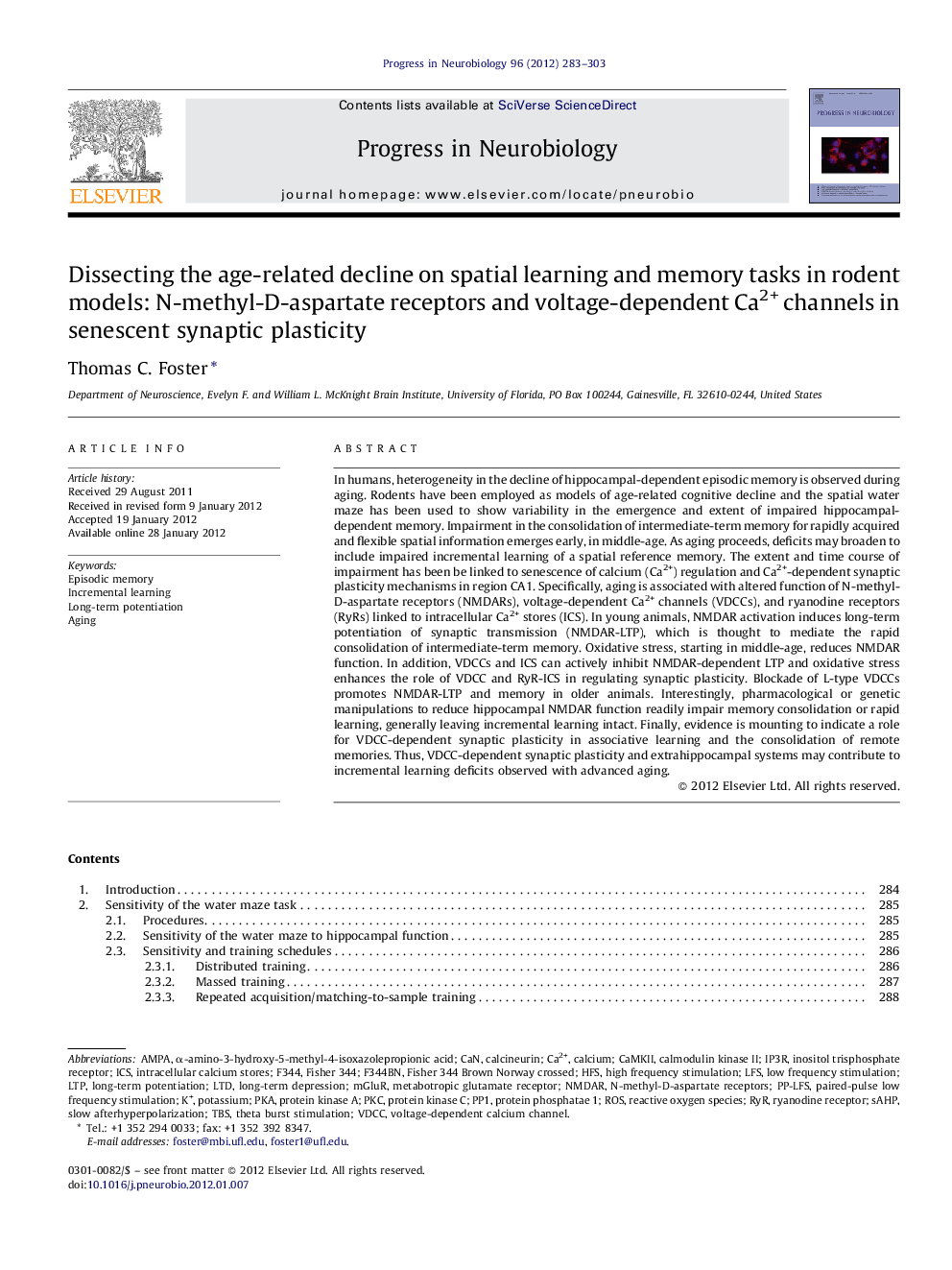| Article ID | Journal | Published Year | Pages | File Type |
|---|---|---|---|---|
| 4353484 | Progress in Neurobiology | 2012 | 21 Pages |
In humans, heterogeneity in the decline of hippocampal-dependent episodic memory is observed during aging. Rodents have been employed as models of age-related cognitive decline and the spatial water maze has been used to show variability in the emergence and extent of impaired hippocampal-dependent memory. Impairment in the consolidation of intermediate-term memory for rapidly acquired and flexible spatial information emerges early, in middle-age. As aging proceeds, deficits may broaden to include impaired incremental learning of a spatial reference memory. The extent and time course of impairment has been be linked to senescence of calcium (Ca2+) regulation and Ca2+-dependent synaptic plasticity mechanisms in region CA1. Specifically, aging is associated with altered function of N-methyl-D-aspartate receptors (NMDARs), voltage-dependent Ca2+ channels (VDCCs), and ryanodine receptors (RyRs) linked to intracellular Ca2+ stores (ICS). In young animals, NMDAR activation induces long-term potentiation of synaptic transmission (NMDAR-LTP), which is thought to mediate the rapid consolidation of intermediate-term memory. Oxidative stress, starting in middle-age, reduces NMDAR function. In addition, VDCCs and ICS can actively inhibit NMDAR-dependent LTP and oxidative stress enhances the role of VDCC and RyR-ICS in regulating synaptic plasticity. Blockade of L-type VDCCs promotes NMDAR-LTP and memory in older animals. Interestingly, pharmacological or genetic manipulations to reduce hippocampal NMDAR function readily impair memory consolidation or rapid learning, generally leaving incremental learning intact. Finally, evidence is mounting to indicate a role for VDCC-dependent synaptic plasticity in associative learning and the consolidation of remote memories. Thus, VDCC-dependent synaptic plasticity and extrahippocampal systems may contribute to incremental learning deficits observed with advanced aging.
► The water maze can detect a progressive decline in cognition during aging. ► Dysregulation of Ca2+ homeostasis modifies the threshold for synaptic plasticity. ► NMDAR-dependent synaptic plasticity declines with age. ► VDCC and RyR-ICS regulation of synaptic plasticity increases during aging. ► Aging of synaptic plasticity mechanisms contribute to variability in memory deficits.
